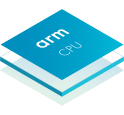
How it started
Earlier today I as looking at some code that I wrote on godbolt.org and noticed an interesting symbol named __aeabi_idivmod. The code included an implementation of gcd(a, b), following the Euclidean (non-extended) algorithm, which includes modulo operation. The assembly label that included the reference to the previous symbol is included below.
.L31:
mov r1, r4
bl __aeabi_idivmod
mov r0, r4
cmp r1, #0
bne .L40
cmp r4, #1
beq .L41
Curiosity prompted an investigation into __aeabi_idivmod; I was able to find the ARM assembler file that includes the definition for this modulo division. This is an obvious reference to an ABI and I found some helpful documentation on GitHub that provides some interesting information. One thing in particular stood out:
Implementations of idiv, uidiv, idivmod, and uidivmod have full AAPCS32 privileges and may corrupt any register an AAPCS-conforming call may corrupt.
What is AAPCS32?
Full documentation on AACS32 can be found here. Notably, the order of function parameter matters. According to the AACS32 documentation, the following general purpose registers are relevant: r0, r1, r2, and r3. (For additional information on ARM registers, please refer to my GitBook Reverse Engineering page). Note that the majority of my notes are included in the Low Level Computing page and not the Reverse Engineering page.
According to the AACS32, registers r0 & r1 are scratch registers for results, while r2 & r3 are scratch registers for other use. Crucially, AACS32 defines different behavior for datatypes that exceed 32-bits.
The first four registers (r0, r1, r2, and r3) are used to pass argument values into a subroutine and return a result. Something else worth mentioning, is that AAPCS32 seems to be linked to the THUMB ISA.
The AAPCS requires that all sub-routine call and return sequences support inter-working between Arm and Thumb states….
In the snippet above, you’ll notice that the instruction is bl or branch with link; an instruction that, according to the AAPCS32, is used to call a subroutine. Remember that general purpose register r14 on an ARM architecture is used for link; that is, r14 will hold the address to return when a subroutine call completes.
int gcd(int a, int b) {
if (b == 0)
return a;
return gcd(b, a % b);
}
Looking at the function above, the subroutine call to __aeabi_idivmod is implementing gcd(b, a % b). The assembly shows that a value in the register r4 is moved in r1, which is a scratch register used for arguments (along with r3). The bl instruction calls the subroutine and stores the return address in r14 the Link register. The quotient is stored in r0 and the remainder in r1.
I believe the mov r0, r4 instruction is moving the value for b into r0 for a comparison, if (b == 0). The instructoin cmp r1, #0 compares the remainder (int r1) to 0
The remaining assmebly is self-explanatory.
Why did I investigate this?
Learning about the internals of a CPU (or anything in general) is always beneficial in cybersecurity. The more you know, the capable you are as a security researcher.
Additionally, I find this topic interesting, and enjoy learning about the internals of a CPU and the compiler.
